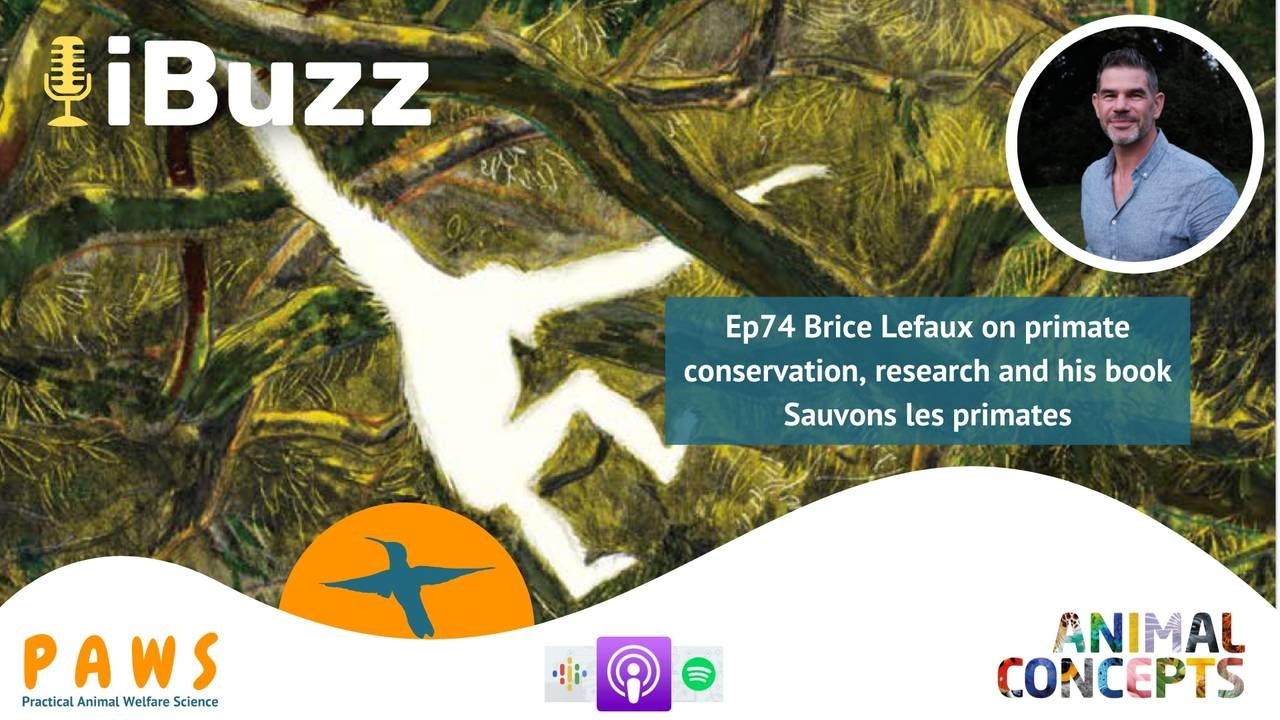Ep74 Brice Lefaux on primate conservation, research and his book Sauvons les primates

Let’s welcome Dr Brice Lefaux for today’s podcast as he takes us around the world to meet with the most endangered species of primates on earth.
It all started with Lily, the family dog. Growing up together, and learning to live with each other was probably the trigger to a life dedicated to animal welfare and conservation. One career option would be becoming a vet, although it wouldn’t be a match to his determination to make a difference.
Not realising at first how zoos could have an impact, Brice still decided to take a position as a Vet and Assistant manager at Bioparc de Doué la Fontaine. After a year, he experienced his first fieldwork in South America with Spider monkeys, a species of which he was studbook keeper back in Europe. There he realised that zoos were undeniable for the sustainability of field research and in-situ conservation actions. He felt a true connection to the wild and his long-standing passion for primates got even stronger.
For 21 years now, he has been active in animal conservation and welfare. He now works in Mulhouse Zoo which he considered being not just a zoo but a Conservation centre.
Today we can share his dedication to conservation, and more specifically primates' conservation through his recently published book Sauvons Les primates (“Let’s save primates” in English). This book targets everyone interested in primates' conservation and highlights unknown species such as Roloway monkeys, gibbons or lemurs that face greater threats than the more notorious great apes. This particular issue is very important to Brice as he reminds us that there is significant bias on financial investment in conservation programs favouring great apes' protection.
Moving on with talking about primates' conservation, he emphasises the fact that zoos have a major role to play in educating people. Without the zoos no one would be talking about these unknown species, except for scientists, so would have limited finance in their conservation programs to help save these species. And once again, he stresses that everything is connected: education, zoos, research, conservation, fundings etc.
Brice continues with a warm acknowledgement of the artist that did all the drawings from his book. He feels true emotions through all illustrations and hopes people will feel it too.
Brice finally concludes by indicating that his work is not only to advertise us on the threats to our biodiversity. He also offers solutions to conserve primate populations. He challenges us to review our way of living and our consumption habits. Changing is saving, and his book is a call for action.
Listen on your favourite player or directly HERE
Find out more about Dr Brice Lefaux’s book Sauvons les primates HERE
To find out more about Lemurs’ conservation HERE
To find out more about West African primates conservation HERE
To find out more about Gibbons’ conservation HERE
To find out more about Titi monkeys’ conservation HERE
Become a member HERE

